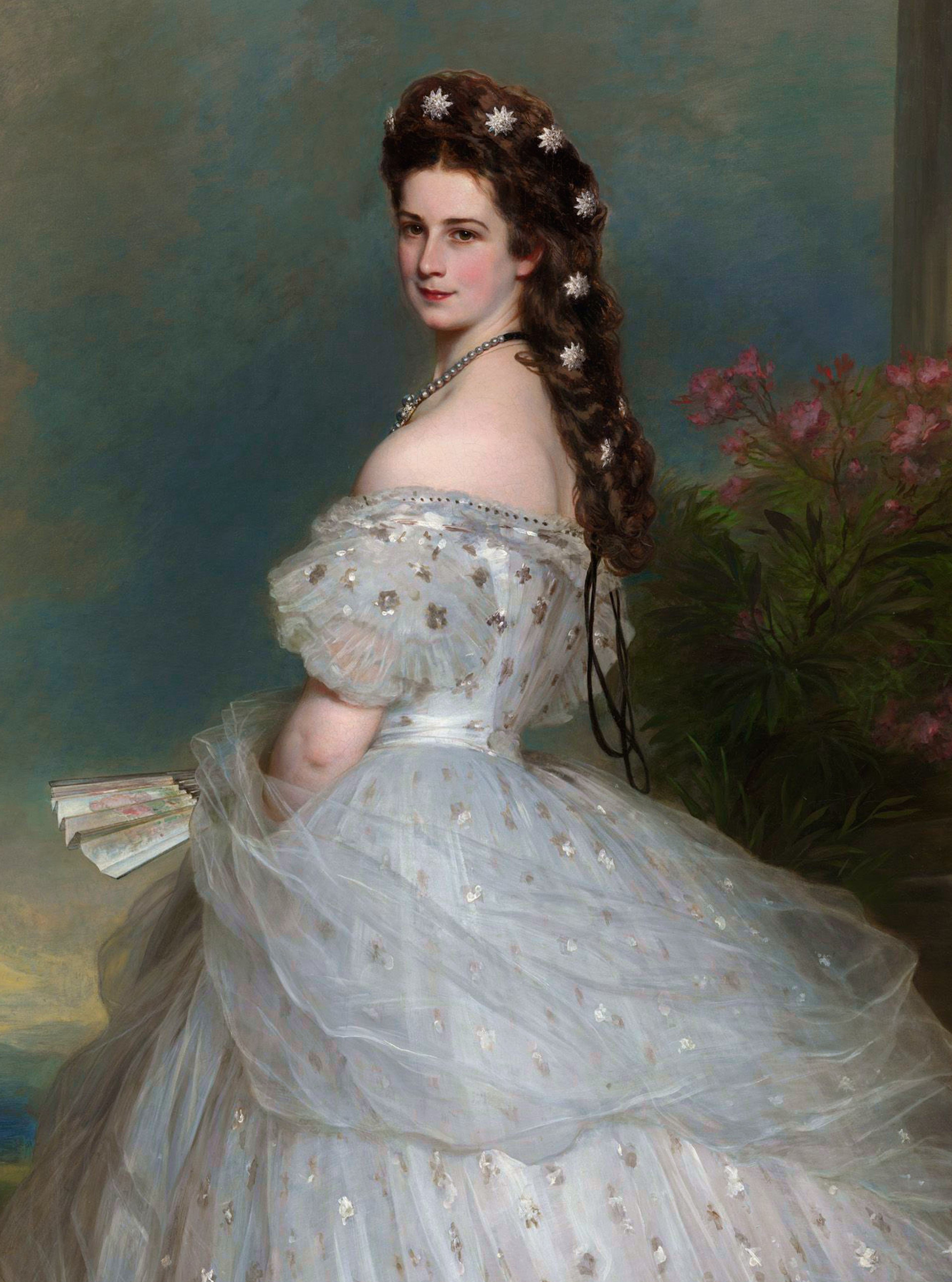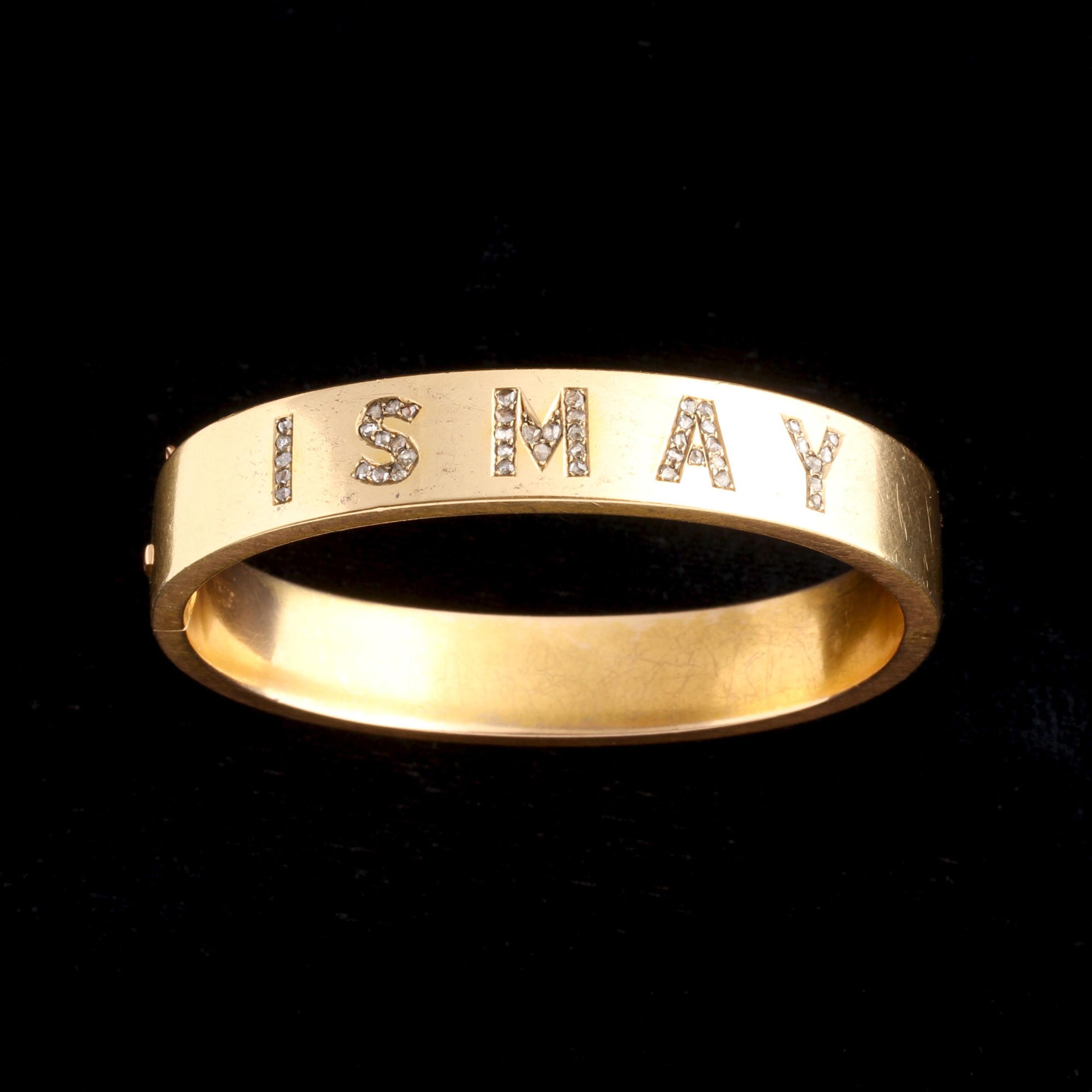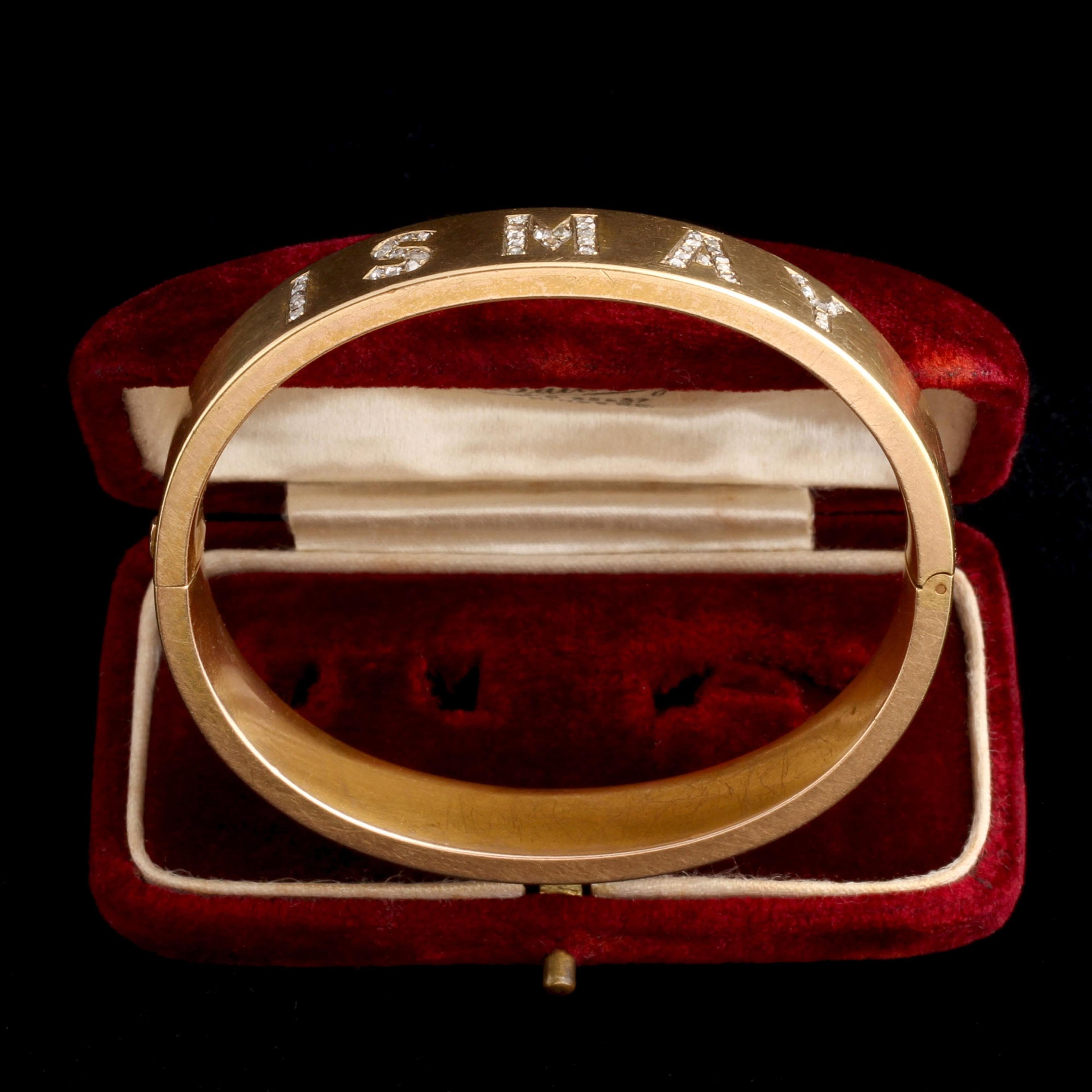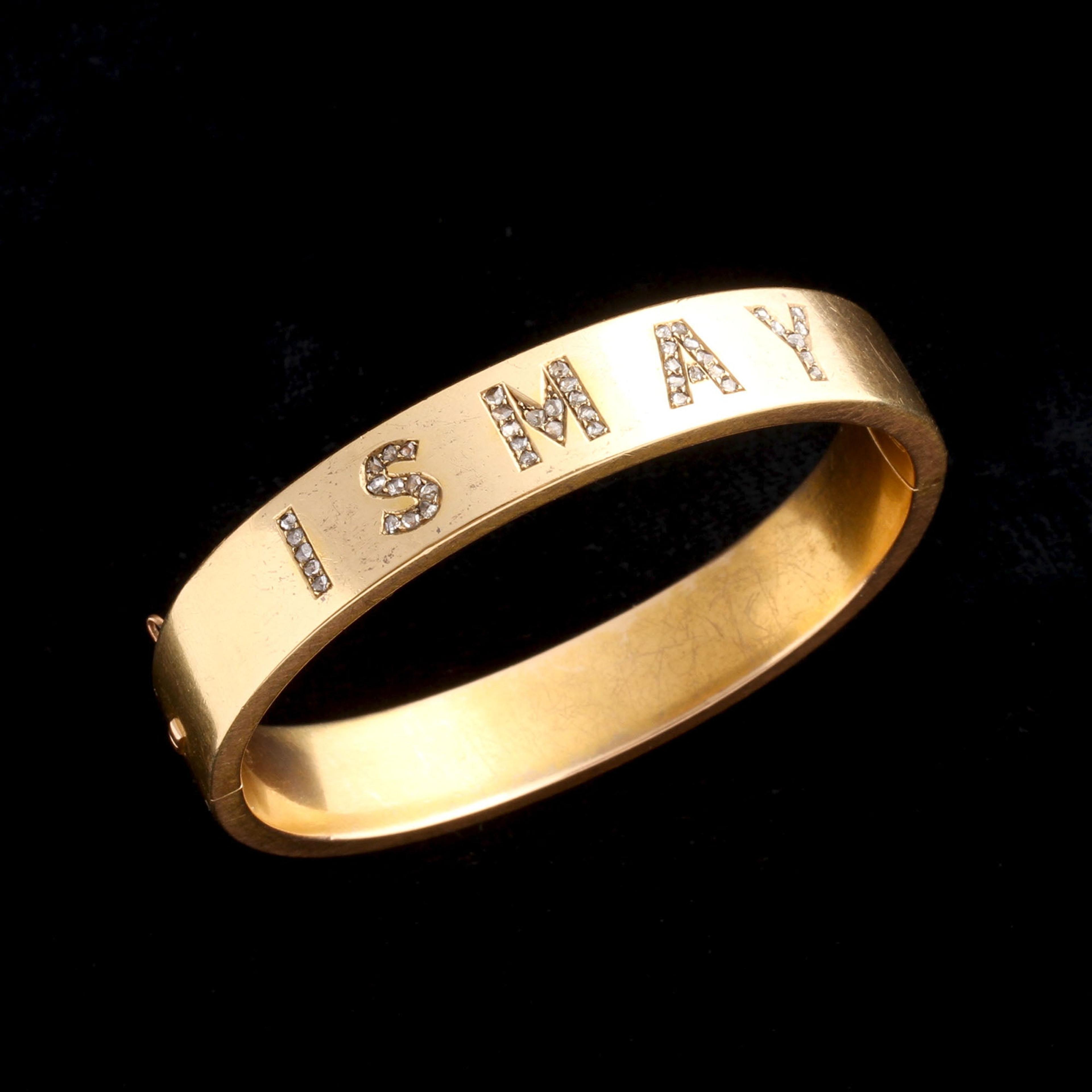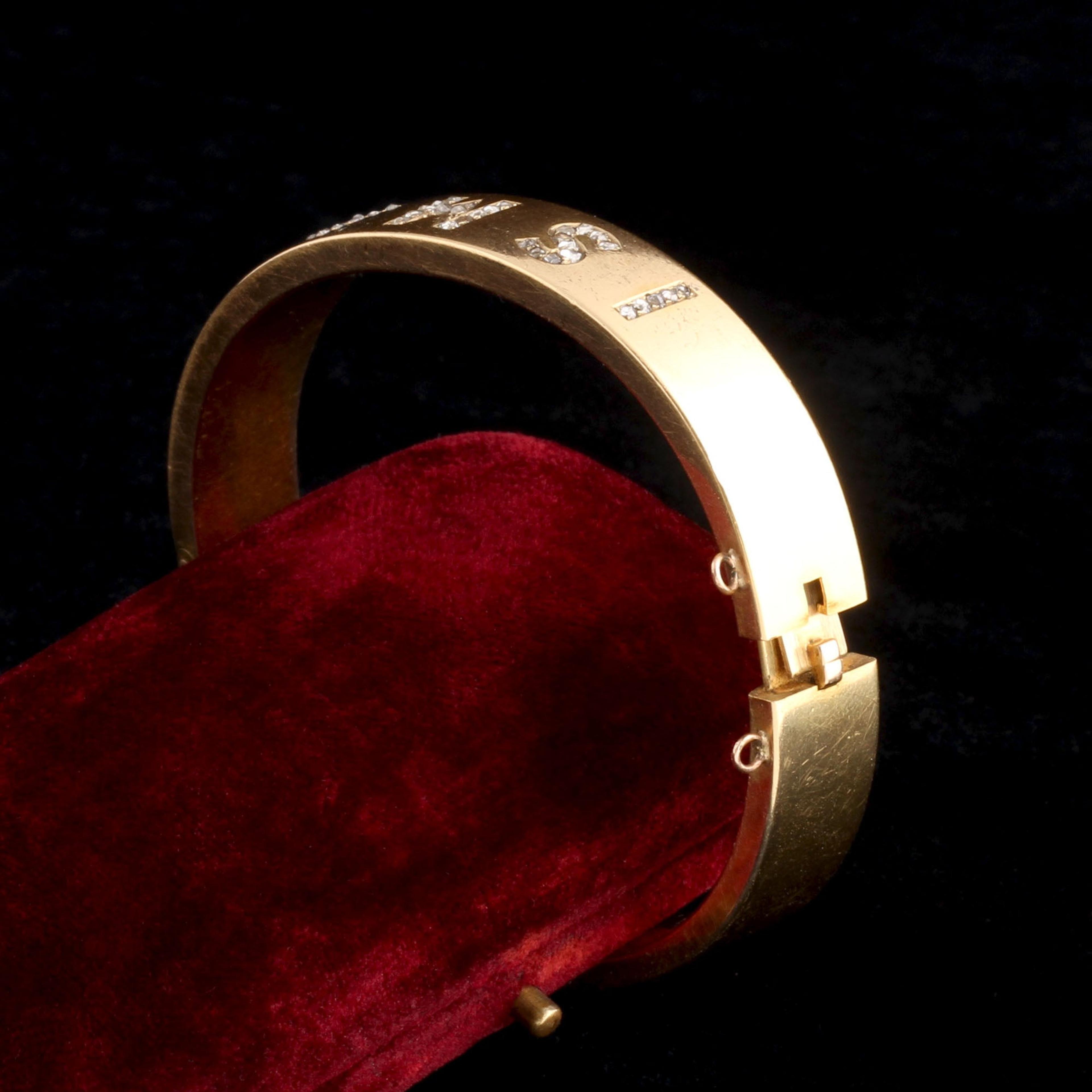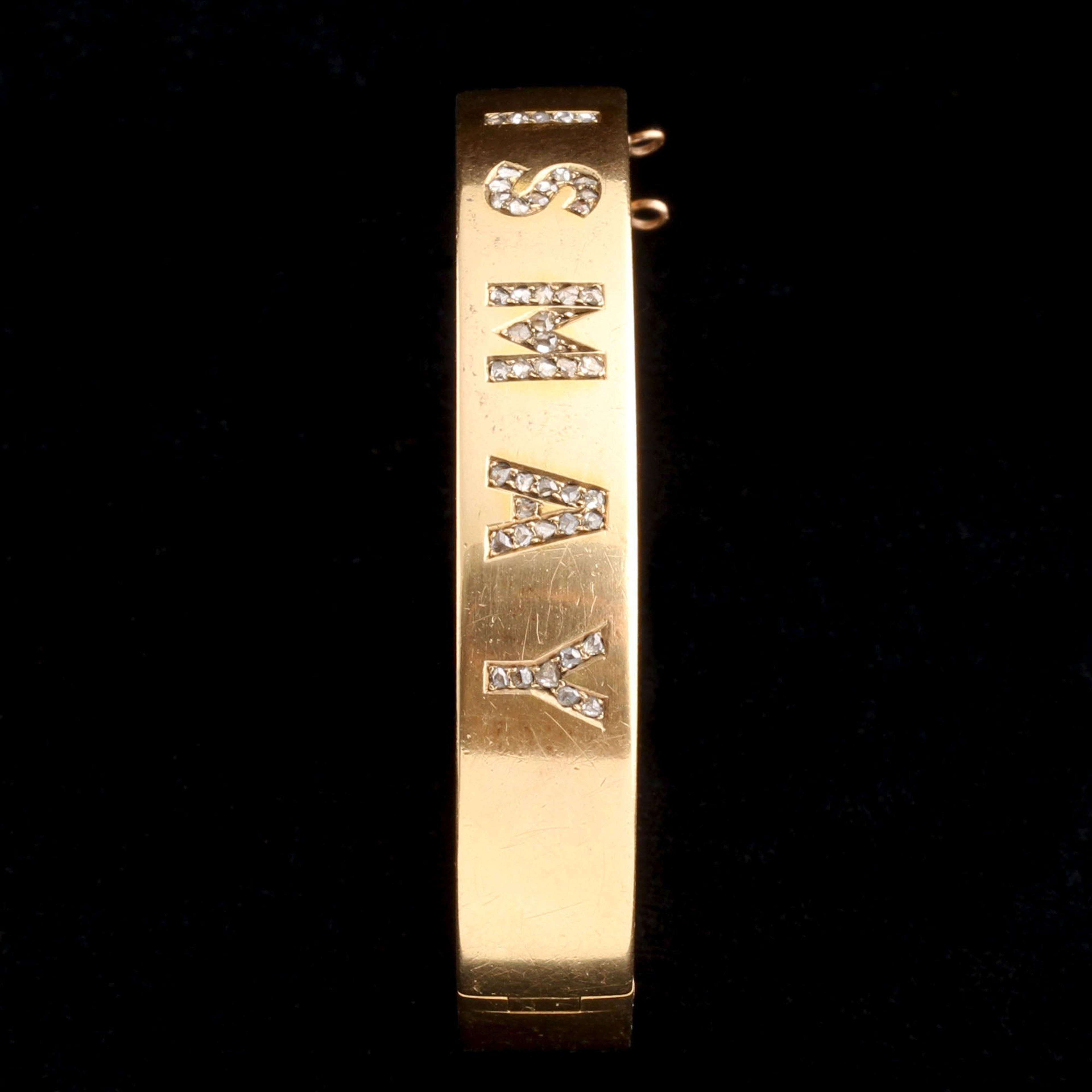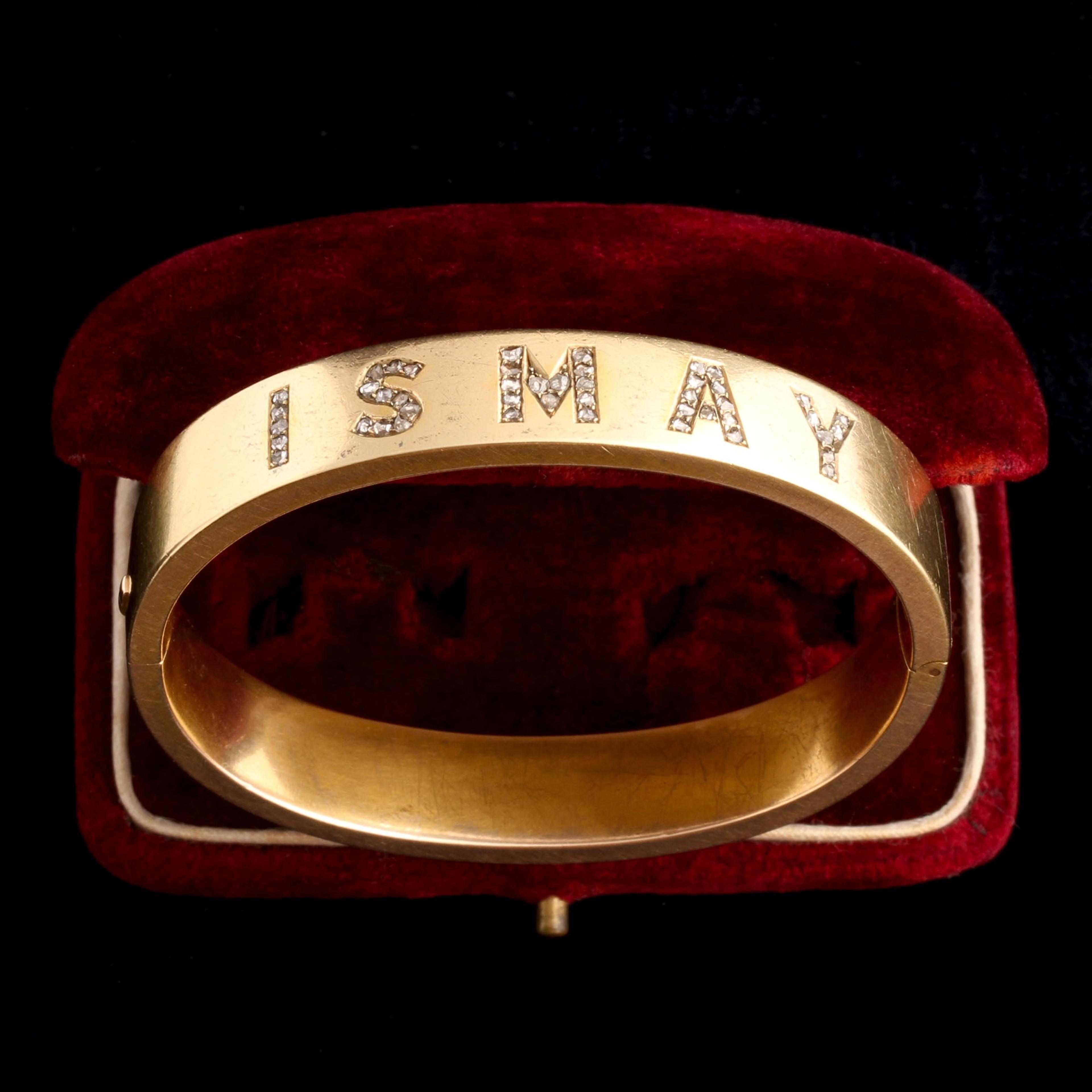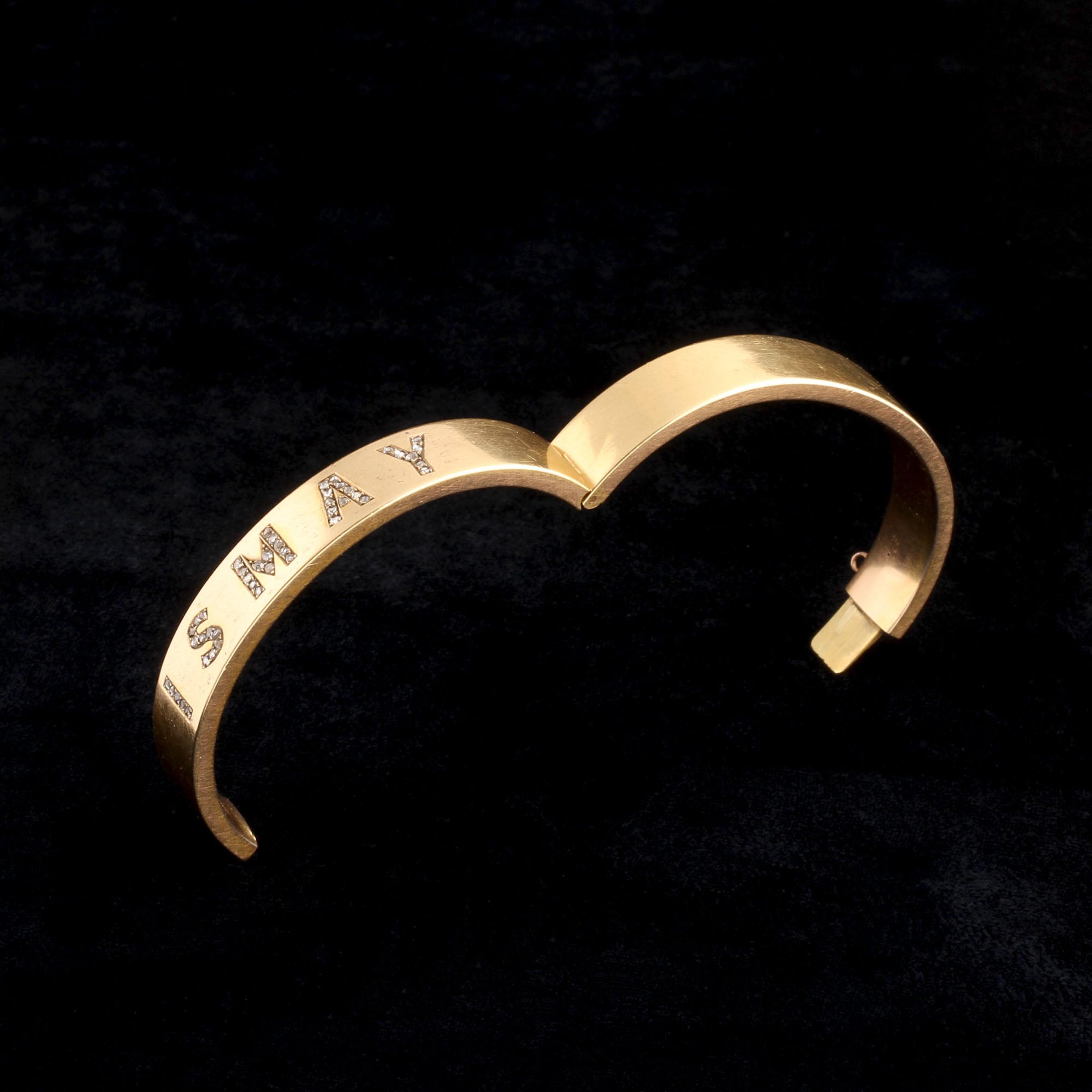This bracelet was owned by Ismay Diana Fitzroy (1933 -2022), daughter of Lord John Percy Fitzroy. The bracelet itself is Victorian (c. 1880), so it would have been vintage when Ismay Fitzroy acquired it. Ismay could be the first or last name of the original owner. It's a very old English surname, but it's not a very common one so clearly it was custom made. There's a possible (but difficult to prove) connection to Joseph Bruce Ismay, an English businessman who served as chairman and managing director of the White Star Line. In 1912, he came to international attention as the highest-ranking White Star official to survive the sinking of the company's new flagship RMS Titanic, and when he returned to land, his life was forever changed. People were NOT happy about how things went down at sea (pun intended, friends).
thedetails
- Materials
14k gold (tests), 44 1.5mm rose cut diamonds
- Age
c. 1880
- Condition
Very good - surface wear commensurate with age and use; a few small dents along the back of the bracelet
- Size
6 1/2" inner circumference, 3/8" shank, weighs over 30 grams
Need more photos?
Send us an email to request photos of this piece on a model.
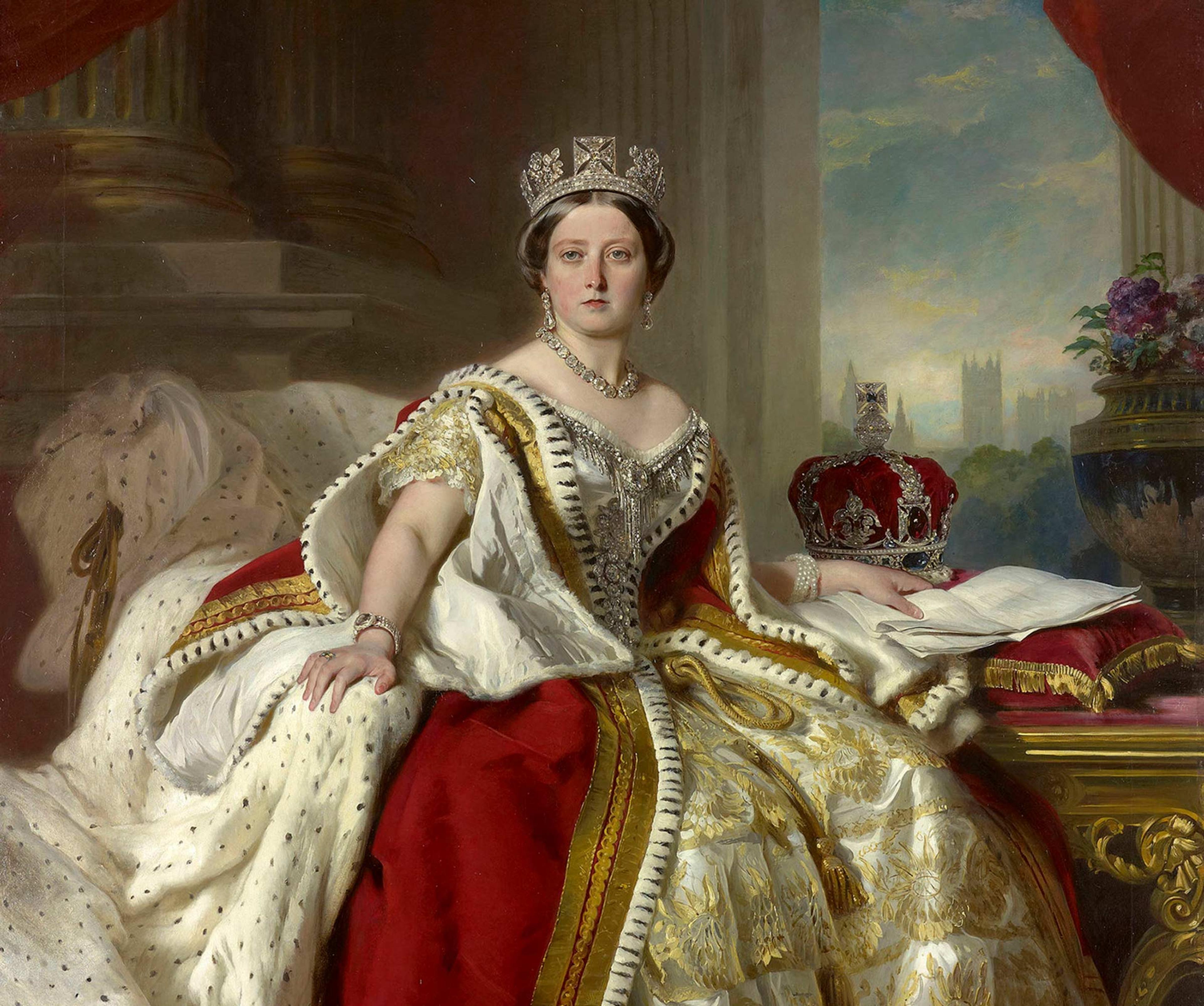
Aboutthe
VictorianEra
1837 — 1901
The Victorians were avid consumers and novelty-seekers, especially when it came to fashion, and numerous fads came and went throughout the 19th century. In jewelry, whatever fashion choices Queen V. made reverberated throughout the kingdom. The Romantic period reflected the queen’s legendary love for her husband, Albert.
Jewelry from this period featured joyful designs like flowers, hearts, and birds, all which often had symbolic meaning. The queen’s betrothal ring was made in the shape of a snake, which stood for love, fidelity, and eternity. The exuberant tone shifted after Prince Albert passed away in 1861, marking the beginning of the Grand Period. Black jewelry became de rigeur as the Queen and her subjects entered “mourning,” which at the time represented not just an emotional state, as we conceive of it today, but a specific manner of conduct and dress. She wore the color black for the remainder of her life, and we see lots of black onyx, enamel, jet, and gutta percha in the jewelry from this time. Finally, during the late Victorian period, which transitioned along with a rapidly changing world into the “Aesthetic Movement”, there was a return to organic and whimsical motifs: serpents, crescent moons, animals, and Japonaisserie designed for the more liberated “Gibson Girl”. During the second half of the 19th century, America entered the global jewelry market, with Tiffany and Co. leading the way. Lapidaries continued to perfect their techniques, and the old European cut emerged toward the end of the Victorian period. The discovery of rich diamond mines in South Africa made the colorless stones more accessible than ever before.
please note:Terms of Sale
Antiques can be returned unworn and in original condition within 10 days of delivery for an exchange or refund minus the cost of shipping. Once a piece has been altered, including ring re-sizing, it is FINAL SALE.
